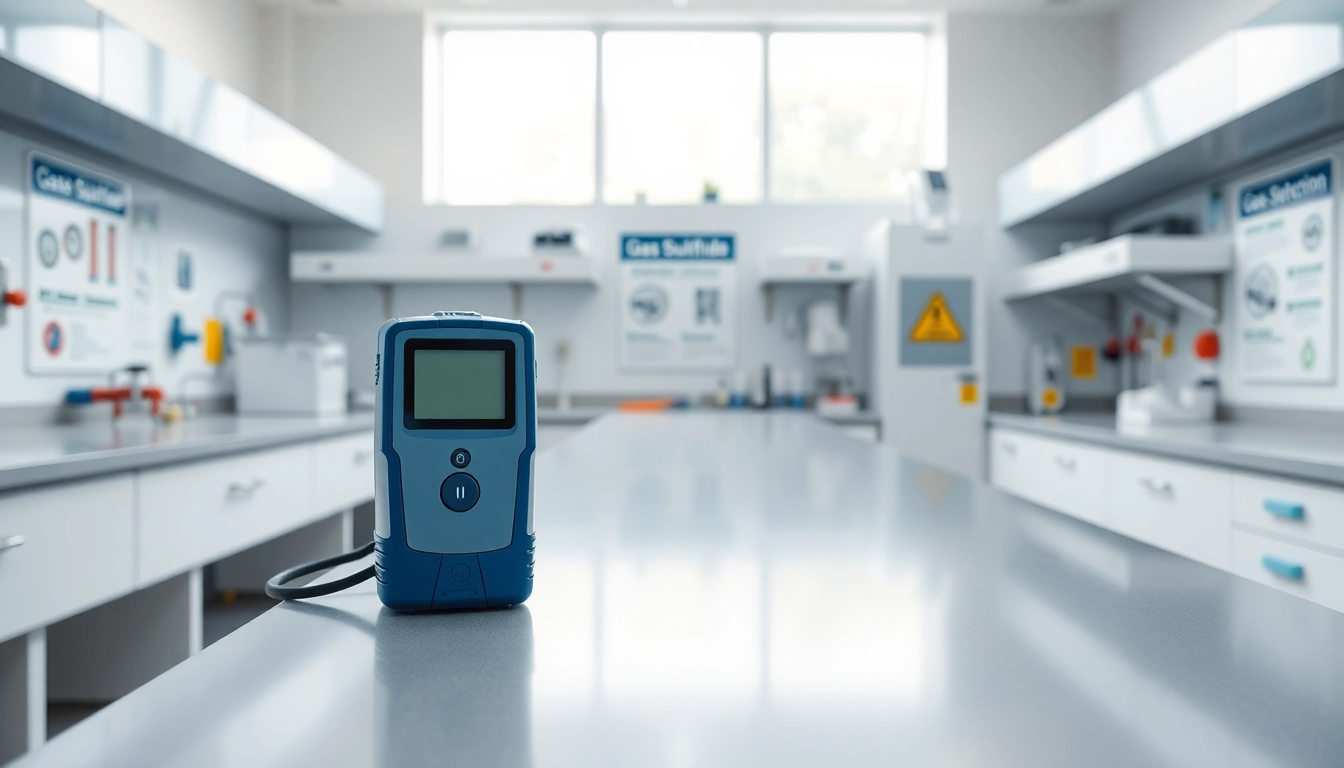Understanding Hydrogen Sulfide Detectors
Hydrogen Sulfide (H2S) is a colorless, flammable gas with a characteristic odor of rotten eggs. It’s known for its toxicity and ability to cause significant health hazards in both industrial and confined space environments. To ensure safety, a reliable Hydrogen Sulfide detector is essential. This article will explore the various aspects of hydrogen sulfide detectors, from their operation to best practices for usage.
What is a Hydrogen Sulfide Detector?
A hydrogen sulfide detector is a specialized device designed to sense the presence of H2S gas in the environment. These detectors are critical in various industries such as oil and gas, wastewater treatment, and agriculture, where hydrogen sulfide exposure is a risk. The detectors function by continuously monitoring the air quality and alerting personnel when hydrogen sulfide concentrations exceed predefined safety thresholds.
How Do Hydrogen Sulfide Detectors Work?
Hydrogen sulfide detectors utilize different sensing technologies to detect gas levels. The two primary sensor types include electrochemical sensors and infrared sensors. Electrochemical sensors operate by generating a small electrical current when H2S makes contact with the sensor’s electrolyte. In contrast, infrared sensors measure the absorption of infrared light by specific gas molecules, which effectively determines the concentration of hydrogen sulfide in the air.
Importance of Hydrogen Sulfide Detection
The presence of hydrogen sulfide poses significant health risks, including irritation of the eyes, respiratory distress, and in higher concentrations, even death. Early detection is vital in preventing exposure and ensuring the safety of personnel. Furthermore, because hydrogen sulfide detectors can help avoid hazardous situations, they contribute to compliance with safety regulations and promote a culture of safety within organizations.
Types of Hydrogen Sulfide Detectors
Portable vs. Fixed Detectors
Hydrogen sulfide detectors come in two main forms: portable and fixed. Portable detectors are handheld devices that employees can carry into various work environments, making them ideal for personal monitoring in confined spaces. Fixed detectors, on the other hand, are stationary devices installed in specific locations, continuously monitoring air quality and providing a warning when gas levels exceed safety limits.
Single-Gas vs. Multi-Gas Detectors
Another classification of hydrogen sulfide detectors is their capability to detect either a single gas or multiple gases simultaneously. Single-gas detectors are designed solely to monitor hydrogen sulfide levels, while multi-gas detectors can monitor several gases, including CO (carbon monoxide) and O2 (oxygen). The choice between these types depends on environmental conditions and the specific risks associated with different gases present in the workplace.
Choosing the Right Type for Your Needs
When selecting a hydrogen sulfide detector, it is crucial to consider the specific needs of your working environment. For confined spaces or fields where multiple gases are a concern, portable multi-gas detectors may be the best option. Conversely, for fixed installations in areas with known hydrogen sulfide exposure, a stationary single-gas detector may suffice. Consulting with safety professionals can further assist in making the right choice to maintain a safe working environment.
Key Features to Look for in a Hydrogen Sulfide Detector
Sensor Technology and Sensitivity
The effectiveness of a hydrogen sulfide detector primarily hinges on its sensor technology. Assess the detector’s sensitivity—high-quality units can detect low concentrations of hydrogen sulfide quickly and accurately. Opt for devices with calibration capabilities to ensure consistent performance over time.
Calibration and Maintenance Requirements
Regular calibration is vital for maintaining detector accuracy. Some models require manual calibration, while others offer automatic self-calibration features. Additionally, it is necessary to consider the maintenance needs, such as battery replacement or sensor lifespan. Knowing these requirements ensures that the detector operates effectively throughout its intended service life.
Battery Life and Portability
For portable detectors, battery life is a critical feature. Look for batteries that can sustain prolonged use without frequent replacement. Some sophisticated models even offer rechargeable options. Portability also encompasses weight and design, which should be tailored for ease of use in various environments.
Best Practices for Using Hydrogen Sulfide Detectors
Installation Guidelines
Proper installation of hydrogen sulfide detectors is crucial for accurate performance. For fixed detectors, placement is vital; they should be located in areas where hydrogen sulfide is likely to accumulate. Following manufacturer guidelines and safety regulations during installation ensures optimal functionality and compliance.
Regular Testing and Calibration
To guarantee the reliability of hydrogen sulfide detectors, regular testing and calibration are necessary. Establish a routine for inspecting detectors, including functionality tests and calibrating sensors according to manufacturer specifications. Record and monitor the detector’s performance as part of your safety protocols.
Safety Protocols and Training
Employees must be trained to understand the importance of hydrogen sulfide detectors and how to respond to alarms appropriately. Developing comprehensive safety protocols that include regular training sessions can enhance overall workplace safety and readiness for emergencies involving hydrogen sulfide exposure.
Comparative Analysis of Leading Hydrogen Sulfide Detectors
Top Brands and Models Reviewed
Several brands are recognized for their high-quality hydrogen sulfide detectors. Brands like MSA Safety, Honeywell, and Dräger are known for their reliable products. When reviewing models, consider aspects such as detection range, battery life, and user interface. Each model’s reviews and user feedback can provide insight into real-world performance.
User Experience and Feedback
Understanding user experiences through reviews and feedback can significantly impact decision-making. Look for detectors with positive testimonials about accuracy, ease of use, and prompt customer support. Participating in forums and professional networks can foster insights on how specific models perform under varying conditions.
Long-Term Cost Considerations
Evaluating the long-term cost of hydrogen sulfide detectors requires a comprehensive analysis of initial purchase price, maintenance costs, and lifespan. While some detectors may have a higher upfront cost, their durability, low maintenance needs, and reliable performance can result in overall savings over time. Budgeting for replacement parts and periodic calibrations is also essential in managing costs.



